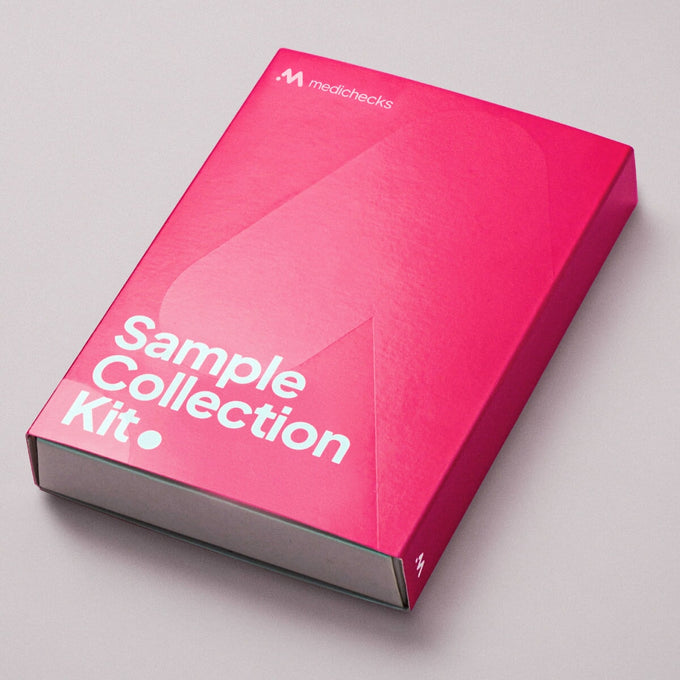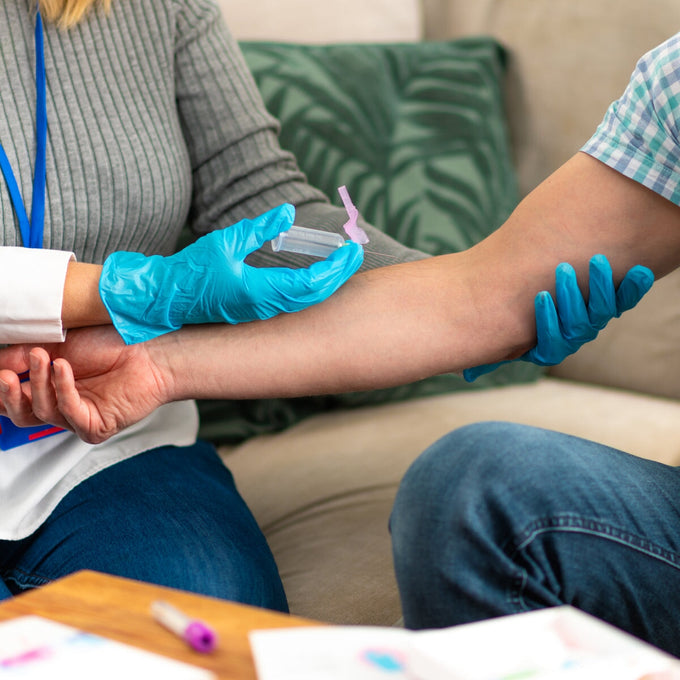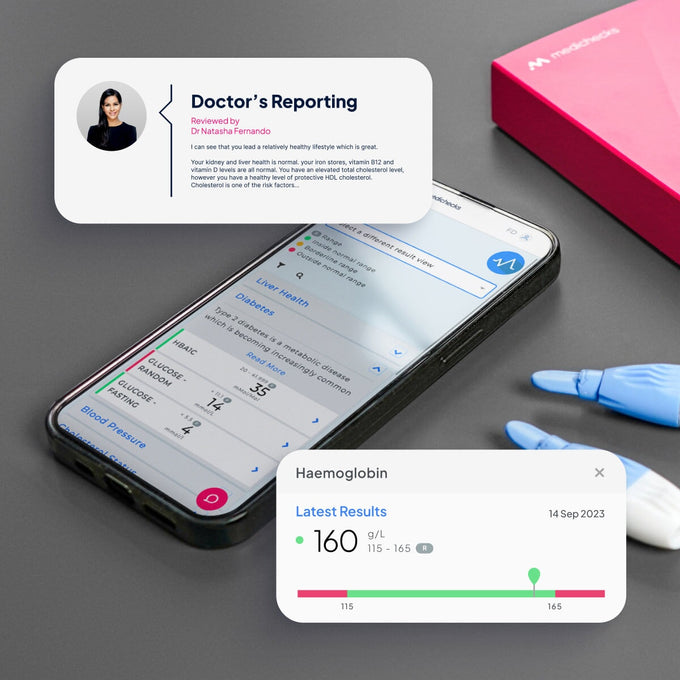Advanced Polycystic Ovary Syndrome (PCOS) Blood Test, from our experts to you.
Dr Sam Rodgers MBBS, MRCGPChief Medical Officer

What is PCOS?
Polycystic Ovary Syndrome (PCOS) is a condition in which your ovaries are enlarged and contain many fluid-filled sacs around the eggs. It is quite common and affects normal ovarian function. A diagnosis is based on medical history, symptoms and high levels of male hormones (androgens).
What are the symptoms of PCOS?
Symptoms include irregular or absent periods or excess facial hair growth, thinning hair, and difficulty getting pregnant.
What can I learn from this test?
Our Advanced Polycystic Ovary Syndrome (PCOS) Blood Test contains a comprehensive hormone panel, including tests for the hormones testosterone, FSH, and LH. It also measures anti-Mullerian hormone (which can be raised if you have PCOS) and prolactin (which can give insights into your fertility). Our advanced profile also includes tests for thyroid function, diabetes and cholesterol, all of which can be affected by polycystic ovaries.
What's Included?
How to prepare for your test
Special Instructions
Prepare for your Advanced Polycystic Ovary Syndrome (PCOS) Blood Test by following these instructions. Please take your sample before 10am. Avoid fatty foods for eight hours before your test, you do not need to fast. Take this test two to five days after the start of your period, ideally on day three. It can be taken any time if you do not have periods. Hormonal contraception can affect this test, taking a break from this and using barrier contraception will give more accurate results. If you use hormone gels, pessaries, patches, or tablets, we strongly recommend selecting a venous sample to minimise contamination sometimes seen with finger-prick tests. Otherwise, administer any hormone supplements using gloves, and make sure your fingers have not been in contact with hormone supplements for at least four weeks before taking the test. Hormones can be absorbed deep within the skin even after minimal contact and remain there for weeks despite vigorous handwashing. Do not take biotin supplements for two days before this test, discuss this with your doctor if it is prescribed.




